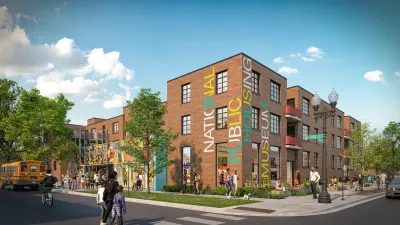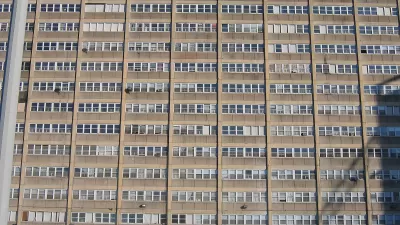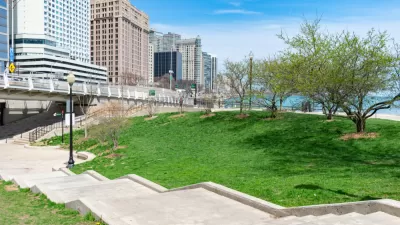1.2 million African Americans lived in Chicago in the 1980s. Now Cook County loses tens of thousands of African Americans every year.

Chicago is losing its African American population. "Once one of the biggest urban enclaves of African-Americans, peaking at 1.2 million in the 80s, Chicago’s black population is projected to drop to 665,000 by 2030, according to the Urban Institute," Josh McGhee writes for the Chicago Reporter.
The reasons for this change are complicated, but many point to disinvestment from black communities and removal of city resources out of black neighborhoods. "The population peaked as Mayor Harold Washington entered office and began its decline with the destruction of public housing projects," McGhee argues.
Housing is only one part of the equation, Chicago’s black population is aging and many point to school closures as a reason for the city losing black families and young people. In 2013, Rahm Emanuel’s administration enacted the largest school closure program the United States had ever seen. There have been many reasons given for the closing of schools in black communities. Initially, the rationale was that closures would save money. As that proved untrue, some were told that it was because of under-enrollment or failure to meet standards. "While the school closures left gaping holes in the South and West sides, there were outliers like Dyett High School where a tradition of community organizing helped make Chicago an enclave of black population and political power," McGhee writes.
FULL STORY: ‘Exodus’ examines rise and fall of Chicago’s black population

Planetizen Federal Action Tracker
A weekly monitor of how Trump’s orders and actions are impacting planners and planning in America.

Map: Where Senate Republicans Want to Sell Your Public Lands
For public land advocates, the Senate Republicans’ proposal to sell millions of acres of public land in the West is “the biggest fight of their careers.”

Restaurant Patios Were a Pandemic Win — Why Were They so Hard to Keep?
Social distancing requirements and changes in travel patterns prompted cities to pilot new uses for street and sidewalk space. Then it got complicated.

California Homeless Arrests, Citations Spike After Ruling
An investigation reveals that anti-homeless actions increased up to 500% after Grants Pass v. Johnson — even in cities claiming no policy change.

Albuquerque Route 66 Motels Become Affordable Housing
A $4 million city fund is incentivizing developers to breathe new life into derelict midcentury motels.

DC Area County Eliminates Bus Fares
Montgomery County joins a growing trend of making transit free.
Urban Design for Planners 1: Software Tools
This six-course series explores essential urban design concepts using open source software and equips planners with the tools they need to participate fully in the urban design process.
Planning for Universal Design
Learn the tools for implementing Universal Design in planning regulations.
Heyer Gruel & Associates PA
JM Goldson LLC
Custer County Colorado
City of Camden Redevelopment Agency
City of Astoria
Transportation Research & Education Center (TREC) at Portland State University
Camden Redevelopment Agency
City of Claremont
Municipality of Princeton (NJ)





























